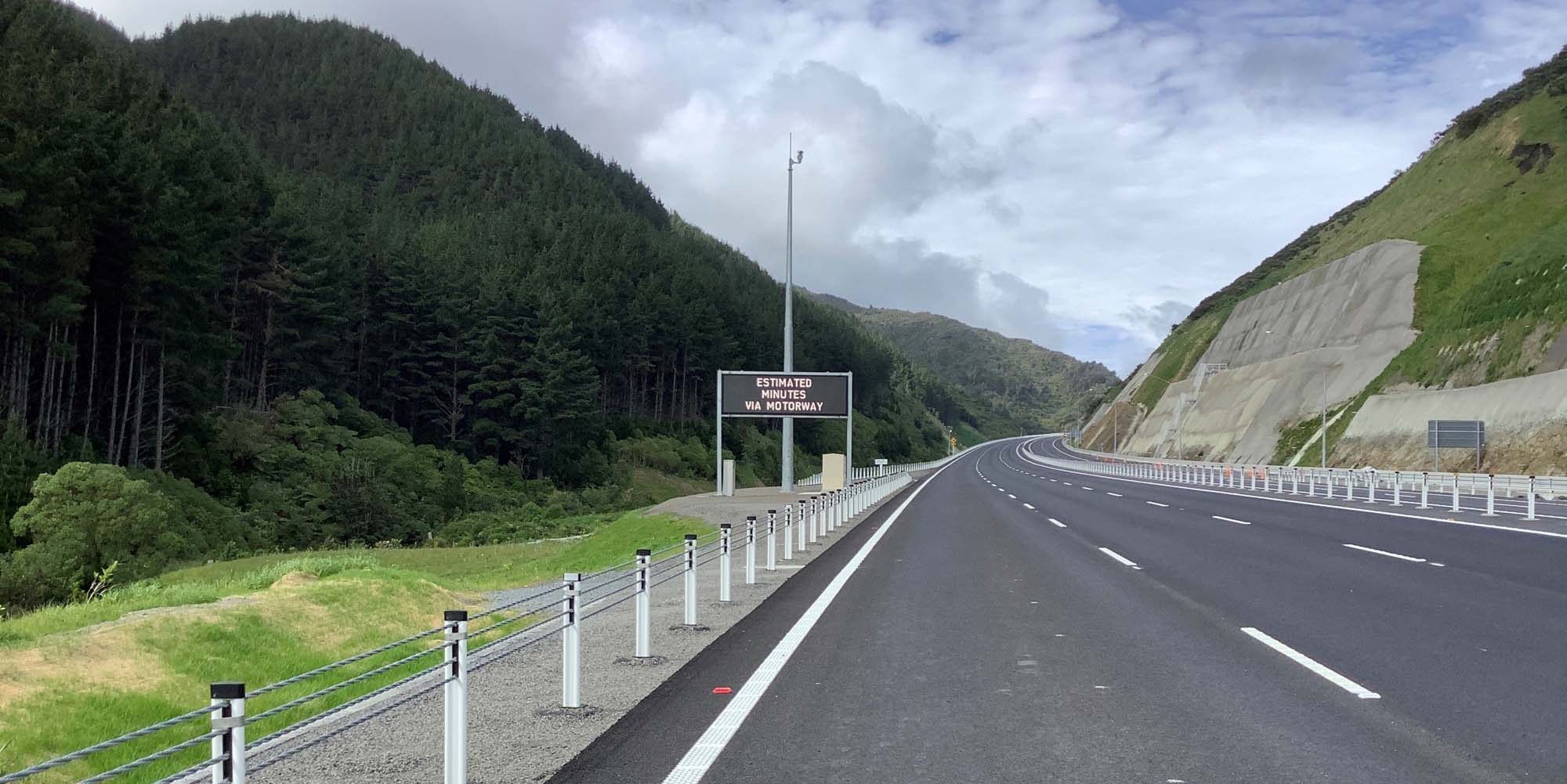The new road through Tranmission Gully is a motorway. This means it has full separation of traffic travelling in different directions via median barriers, interchanges rather than intersections, and no walking or cycling is allowed.
The new motorway will take you through parts of the region you won’t be familiar with, but it is important you keep your eyes on the road. We know it may be tempting to sightsee along the route, but as with all motorways, there is no stopping anywhere on the road, except in an emergency.

Parts of the new motorway are located high in the hills and can be affected by strong winds, fog and even snow or ice. It’s important that you drive to the conditions and adjust your speed and driving accordingly. This includes increasing your following distance.
The variable messaging signs will warn you if there is low visibility, high winds, or other hazards and remind you if the conditions require reduced speed.
When the new motorway opens there may be temporary speed limits in place while the chipseal surface settles. Driving too fast may send loose chips flying, driving too slow may lead to sticky chips sticking to your car – make sure you always drive to the sign posted speed.
As a general rule, in good conditions you should always drive at least two seconds behind the vehicle in front of you.
In other conditions (such as on fresh chipseal or when the road is wet or slippery), you should allow four seconds between you and the vehicle in front.
Count the seconds between when the vehicle in front of you passes a landmark (such a sign or bridge) and when you reach it, to determine your following distance.
One third of the new motorway (the steep sections and around interchanges) has an asphalt surface, while the remaining two thirds is chipseal. When driving on fresh chipseal, remember to follow the signposted speed and leave a longer (four second) following distance.
If you’re joining the new motorway from one of the interchanges there are ways you can help make the journey smoother for everyone.
If you’re joining the motorway at an on-ramp, use the whole length of the merging lane to get up to speed, look for a gap, indicate and merge safely. If there is other traffic in the merging lane, make sure you leave a gap from the car in front so the merging lane can smoothly ‘merge like a zip’ with the flowing traffic.
If you’re already driving on the motorway, leave a gap for merging traffic. By leaving a gap, you’ll make it easier for traffic to flow smoothly and help avoid congestion.
When driving on the new motorway, there are some locations, such as Porirua City Centre for example, where your journey into Wellington will be different to your route home.
For other locations, the new motorway might not be the most efficient route for you to take. People driving to or from Mana, Plimmerton or Pukerua Bay should continue to use the SH59 (formerly SH1) coastal route.
The Kāpiti Expressway joins the new motorway at Mackays Crossing, so when travelling south to Paekākāriki, it is important to remember to leave the motorway and continue your journey on SH59.
The first opportunity to exit will be at the Mackays Crossing interchange and the second is via the Paekākāriki interchange.
If you do miss your exit on the motorway, do not stop, reverse back or try to turn around – continue driving until the next exit.
When the new motorway is open, you’ll be able to use the Waka Kotahi Journey Planner to organise your journey before you drive. In the meantime, you can use the interactive Wellington network map on our website to see what some of your journeys could look like.
Wellington network map
Waka Kotahi Journey Planner (external link)
As with many roads through rural areas, there are sections of the new motorway without mobile phone coverage. These areas vary by mobile network provider. In an emergency, all phones automatically reroute 111 calls to any available mobile network.
If your vehicle breaks down on Transmission Gully:
Transmission Gully is built to the highest safety specifications. However, if a crash or other incident such as a car fire or medical episode happens it is important to remember: